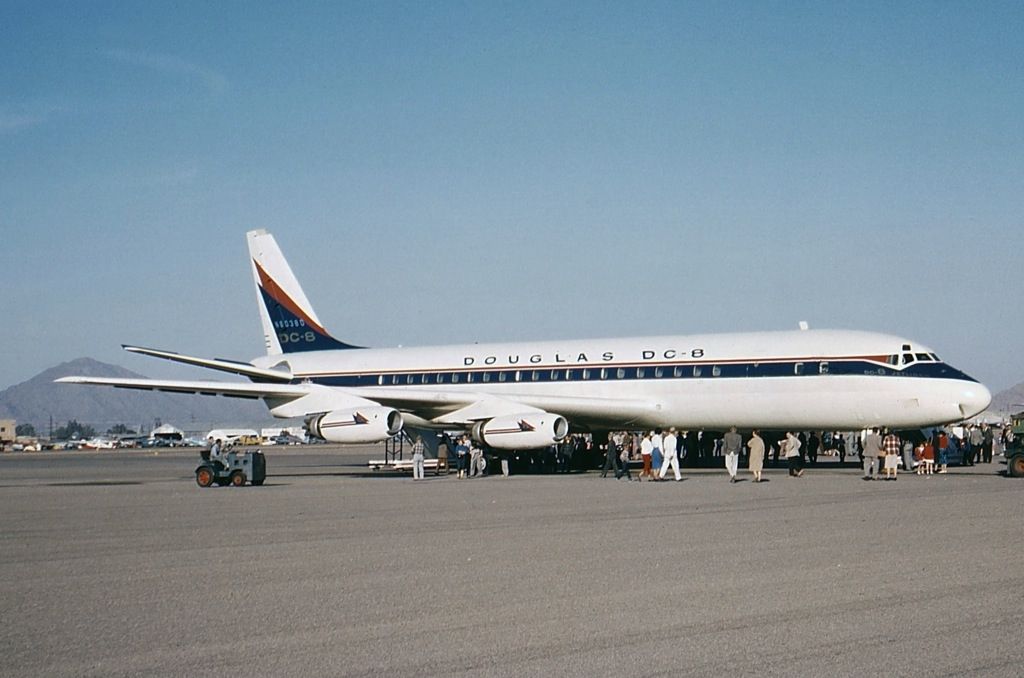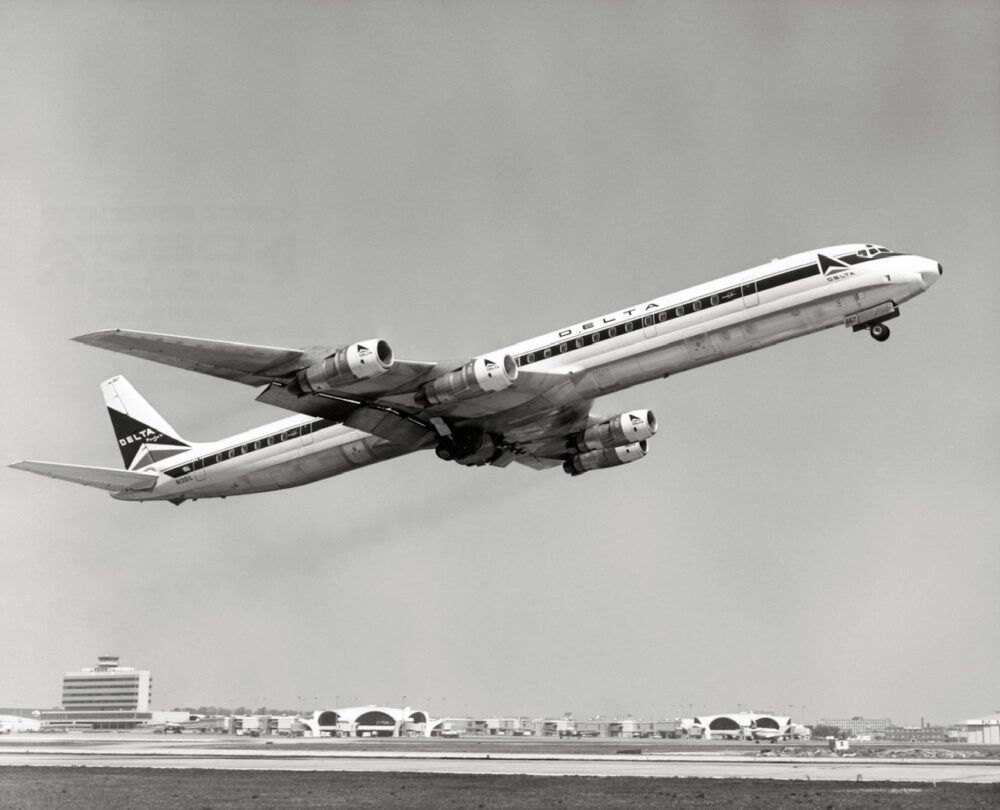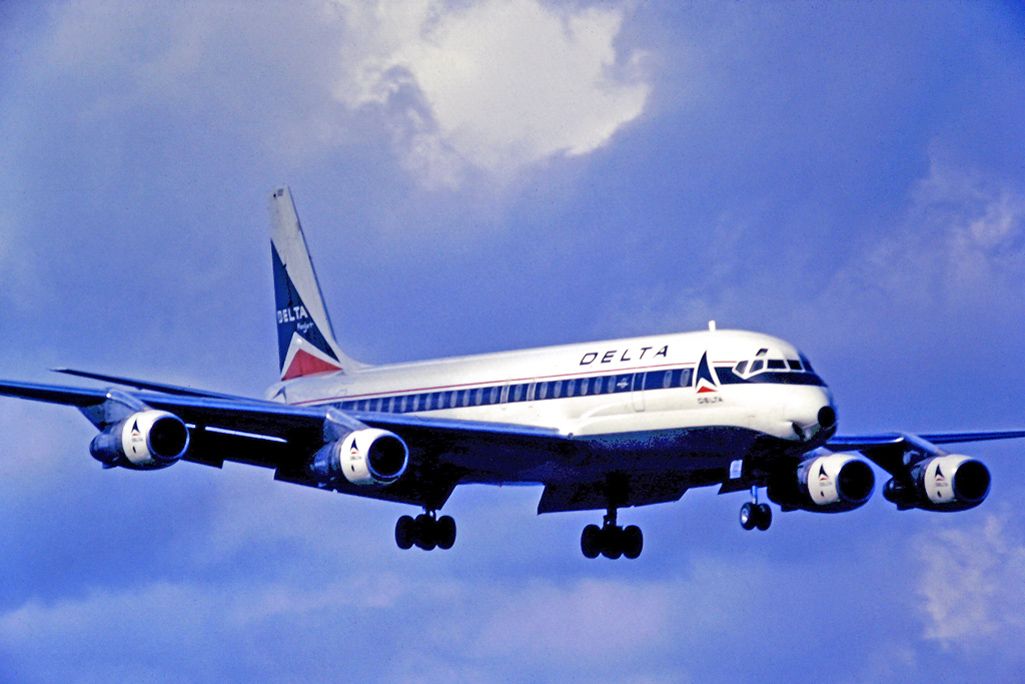Exactly 63 years ago today, on September 18, 1959, the Douglas DC-8 entered service with Delta Air Lines and United Airlines. However, the Atlanta-based carrier claims that it was the airline that introduced the DC-8 to the world.
Following the Second World War, Douglas was the largest of all commercial aircraft manufacturers. This was even though Boeing had introduced the all-metal Model 247 airliner in 1933. The success Douglas had was due to a series of piston-engine driven planes stretching from the DC-2 to the DC-7.
The jet age arrived
Everything in aviation changed in 1940 when de Havilland flew its jet-powered Comet. At first, Douglas kept building piston-powered planes and was justified in its decision following the grounding of the Comet after two fatal accidents.
With it looking increasingly likely that the next evolution in aircraft design would be the introduction of turboprops like the Vickers Viscount and the Lockheed Electra, Douglas looked to use turboprops to power its DC-7.
Meanwhile, Sud Aviation of France introduced the Caravelle while the Comet was grounded. The plane so impressed Soviet Union leader Nikita Khrushchev that when he got home, he ordered Tupolev to build the Tu-134. Boeing had also seen the writing on the wall and knew that once one airline had placed a large order for jets others would have to follow to compete. The plane Boeing came up with was the Boeing 707.
The DC-8 was supposed to be a tanker
In the early 1950s, Boeing and Douglas knew that the United States Air Force was looking for a jet-powered refueling tanker to replace its slow KC-97 Stratofreighters. Knowing that it would be a large order, Douglas assumed that if it could come up with a jet-powered tanker, the government would split the order evenly between the two companies. With Boeing's KC-135 just a couple of months away from flying, the government, much to Douglas's dismay, awarded the entire contract to Boeing. Having already invested so much money and time into the tanker project, Douglas decided that it would push ahead and develop the plane as an airliner.
They first enlarged the fuselage to accommodate six-abreast seating and added larger wings and tail surfaces. Knowing they were well behind Boeing and its 707, Douglas began a massive marketing campaign and got Pan American World Airways (Pan Am) to place an order for 25 DC-8s. With airlines worldwide looking to buy jet airliners, Douglas soon had orders from United Airlines, National Airlines, KLM, Eastern Air Lines, Japan Air Lines, and Scandinavian Airlines System (SAS). Later Douglas got Delta, Swissair, TAI, Trans Canada, and UAT to buy the DC-8. By the beginning of 1958, Douglas had sold 133 DC-8s compared to Boeing's 150 707s.
The first DC-8 rolled out of the company's Long Beach Plant on April 9, 1958, and flew for the first time on May 30, 1958. In August 1959, the plane was awarded its Federal Aviation Authority (FAA) airworthiness certificate.
Delta Flight 823 was the first commercial DC-8 flight
Despite United and Delta launching their inaugural DC-8 flights on the same day, Delta Flight 823 from New York to Atlanta took off first at 09:20 and arrived in Atlanta at 11:00. Being a little more ambitious, United's first DC-8 flight was a transcontinental flight between San Francisco and New York. Because of the three-hour time zone difference, the Delta flight was recorded as the first commercial DC-8 flight.
Not only were the DC-8 flights a colossal success they could carry twice as many passengers as the old piston-powered planes and cut 40% off the journey time.




.gif)